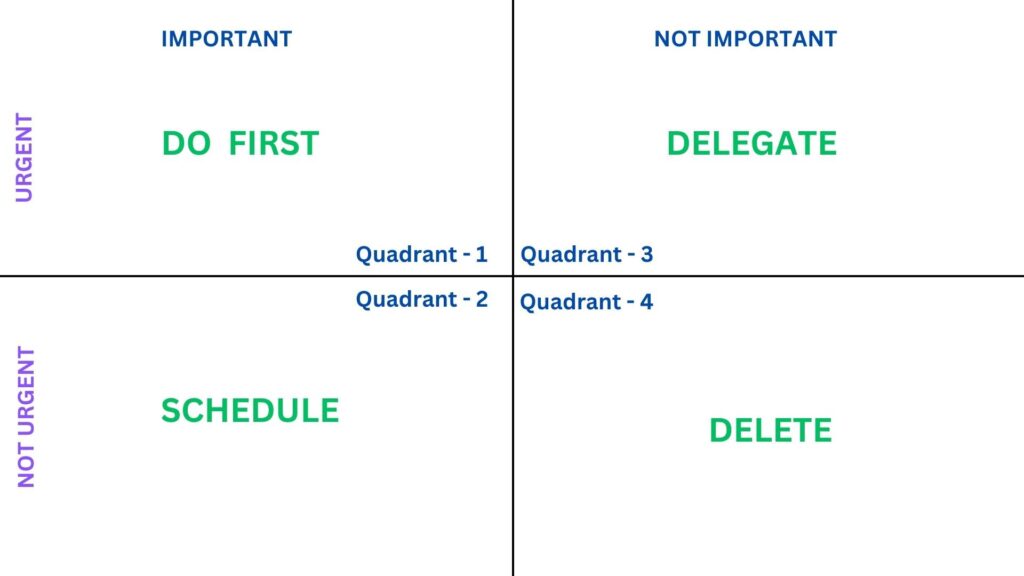In today’s fast-paced world, managing time efficiently is more crucial than ever. With just 24 hours in a day, striking the perfect balance between work, personal life, and leisure can seem like a daunting task.
However, by adopting effective time management techniques, you can not only skyrocket your productivity but also create a structured schedule that allows you to enjoy every aspect of life.

Here’s how you can make the most out of your day by efficiently using your time, scheduling tasks, avoiding distractions, and planning your day.
1. Understanding the Value of Time
Realize that time is a non-renewable resource. Once a moment passes, it’s gone forever. This profound understanding can shift your perspective on how you allocate your time, encouraging you to use it wisely and purposefully.
Every task you choose to do (or not do) shapes your future. Start by evaluating how you currently spend your time and identify areas for improvement.
2. Prioritizing and Scheduling Tasks
Effective time management starts with knowing what needs to be done. Begin each day or even the night before by listing your tasks. Then, prioritize them using the Eisenhower Box (urgent-important matrix). This method helps you visually categorize tasks based on their urgency and importance, allowing you to focus on what truly matters.
Daily Planning Tips:
Create a To-Do List: List everything you need to do.
Prioritize Wisely: Use the Eisenhower Box to prioritize tasks.
Assign Time Blocks: Allocate specific times of the day to tackle high-priority tasks. This method, known as time blocking, can significantly boost your focus and productivity.
The Eisenhower Box, also known as the Eisenhower Matrix, is a powerful tool for effective time management and decision-making. Named after Dwight D. Eisenhower, the 34th President of the United States and a five-star general in the Army, who was known for his incredible ability to sustain high levels of productivity. The matrix helps users distinguish between tasks based on their urgency and importance, facilitating prioritization in a clear and actionable manner.
Understanding the Eisenhower Box
The Eisenhower Box is divided into four quadrants that classify tasks as follows:
Quadrant 1: Urgent and Important (Do First)
Quadrant 2: Important, Not Urgent (Schedule)
Quadrant 3: Urgent, Not Important (Delegate)
Quadrant 4: Not Urgent, Not Important (Delete)

These tasks require your immediate attention and are critical for your success. They are typically linked with pressing deadlines or emergencies that have significant consequences if not addressed promptly. Examples include crisis management, deadline-driven projects, and urgent problems.
3. Efficient Use of Time: The Pomodoro Technique
One proven method to enhance productivity is the Pomodoro Technique. It involves working in short, focused intervals (traditionally 25 minutes), followed by a short break. This technique not only helps in maintaining high levels of focus but also in preventing burnout.

By compartmentalising your workload into manageable chunks of time, you’re more likely to stay on track and less prone to procrastination.
4. Minimising Distractions
In the digital age, distractions are just a click away. Whether it’s social media, unnecessary meetings, or the constant pings from our devices, distractions can significantly derail our productivity. Being proactive about minimizing these disruptions is key. Here are a few strategies:
Use Technology Wisely: Employ apps that block distracting websites during work hours.
Create a Distraction-Free Environment: Find a quiet, organized workspace where you can focus.
Set Expectations with Others: Communicate your focus hours to friends, family, and colleagues to minimize interruptions.
5. The Importance of Breaks
While it may seem counterintuitive, taking regular breaks can drastically improve productivity and mental well-being. Short breaks throughout the day can help reset your brain, prevent decision fatigue, and keep your creativity flowing. T
echniques like the Pomodoro encourage this practice, making breaks an integral part of managing your time efficiently.
6. Reflection and Adjustment
Finally, the key to successful time management lies in continual reflection and adjustment. Regularly assess how well your strategies are working and be open to tweaking your approach.
What works excellently one month may need adjustment the next. Stay flexible and keep experimenting with different techniques until you find a rhythm that suits you.
Conclusion: Making Time Work For You
Mastering time management is an ongoing journey of self-discovery. By prioritizing tasks, using your time efficiently, avoiding distractions, and regularly planning your day, you can harness the power of time to work in your favor.
Not only will you find yourself achieving more, but you’ll also create space in your life for growth, relaxation, and contentment. Remember, time is the canvas on which you paint the masterpiece of your life. Use it wisely.
